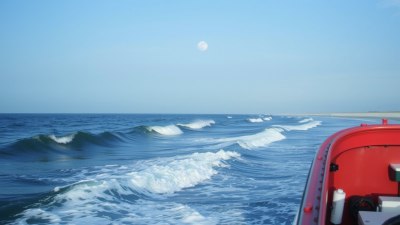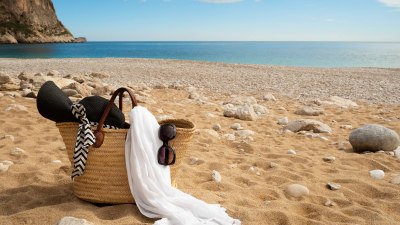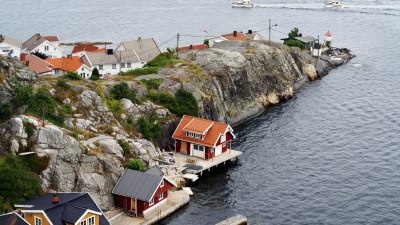When the Ocean Decides the Arrival Time
Explore the profound relationship between the ocean's rhythms and our perception of time, uncovering nature's intricate patterns.

Image created with Flux Schnell
The ocean is an ever-changing expanse, a body of water that shapes the world around it and influences life within it. The tides ebb and flow in metronomic rhythm, a constant reminder of nature’s incredible power and its connection to time. As we delve into the topic of how the ocean decides arrival times, we'll explore the complex interplay between the moon, the sun, and the ocean, examining how this triad affects everything from maritime navigation to the life cycles of countless species.
The gravitational pull of the moon has long been known to affect the Earth's bodies of water, creating what we know as tidal forces. These forces result in two high tides and two low tides in most coastal areas each day. The timing of these tides is not random; rather, it follows a predictable pattern that can be calculated with great precision. Sailors and fishermen have been aware of this for centuries, ensuring their safety and success on the water by adhering to tide schedules.
The Science of Tides
To better understand how the ocean determines arrival times, we must first explore the science behind tides. At its most fundamental level, tides are caused by the gravitational interaction between the Earth and the moon. The moon’s gravity creates bulges in the ocean, which we experience as high tides. The areas not experiencing these bulges will consequently have low tides. This gravitational pull is not constant; it fluctuates based on the moon's position relating to the Earth and sun.
There are several factors influencing tidal patterns. The distance of the moon from Earth can greatly affect tidal heights. During a supermoon, when the moon is closest to Earth, tidal fluctuations can be more pronounced. Seasonal changes also play a role; during the spring and autumn equinoxes, for example, the sun’s gravitational influence can amplify tides, leading to what are known as spring tides.
The Role of the Sun
While the moon has the most direct influence on tides, the sun also plays a significant role. Despite being much larger than the moon, the sun is significantly farther away from Earth, which means its gravitational pull is less potent. Nonetheless, during specific alignments, such as during full moons or new moons, the sun and moon can work together, producing heightened tidal effects. This phenomenon underscores the idea that the ocean’s rhythms are affected by celestial mechanics.
The combination of the moon and sun's gravitational effects creates different tidal cycles. Understanding whether you experience semi-diurnal, diurnal, or mixed tides can help in forecasting tide patterns. For instance, in a semi-diurnal tide system, there are two high tides and two low tides each lunar day. Conversely, in a diurnal system, there is only one tidal cycle of each type per day. The complexity of these systems indicates that the ocean doesn't just tell time—it creates its own unique timing mechanisms.
Historical Perspectives
For many cultures and communities, the ocean has been a critical element of life. Historically, indigenous populations relied on tidal patterns for their fishing and harvesting practices. They understood that the best times to fish or gather resources coincided with specific tidal patterns. By observing the ocean’s behavior, they developed calendars that aligned with the lunar cycle, ensuring that their activities corresponded with the optimal times for success.
In modern times, this relationship has evolved with technology aiding in the understanding of these patterns. Satellites now offer precise tidal predictions and allow for intricate models to forecast not just tides but also the larger implications of ocean dynamics on climate and weather patterns.
Impact on Marine Life
Marine life is also intricately linked to tides and the timing dictated by oceanic rhythms. Many species exhibit behaviors tied explicitly to tidal phases, such as spawning. For example, certain fish species will synchronize their breeding with the cycles of the moon, ensuring the highest likelihood of survival for their young.
Along with fish, tides facilitate the movement of countless marine organisms. Crabs, lobsters, and other crustaceans may time their migrations and spawning events with the rise and fall of tides. As the ocean dictates these arrival times for marine life, it creates a delicate balance that underscores the interconnectedness of all organisms within coastal ecosystems.
Influence on Human Activity
Human activities along coastlines are heavily influenced by tides. The arrival times dictated by the ocean influence shipping routes, fishing schedules, and even recreational activities like surfing. Sailors have learned to navigate precisely according to tide tables, and coastal towns often host events timed with the most favorable conditions, whether it's for boating or beach activities.
Boating enthusiasts stay updated on tidal patterns to ensure safe passage, while commercial fishermen adjust their schedules and techniques according to tide changes. Understanding when fish are more readily available based on tidal behavior is crucial for success in the fishing industry. This symbiosis between humans and marine environments illustrates the critical reliance on the ocean's decision-making when it comes to timing.
The Ocean's Variability
While we can predict tides accurately, the ocean is also an unpredictable element, affected by varying weather conditions, climate change, and human activity. Storms can dramatically alter tidal patterns and introduce complications such as storm surges. In recent years, rising sea levels due to climate change have brought additional uncertainty to coastal communities. These alterations in ocean behavior necessitate constant adaptations to our approaches to maritime navigation, coastal management, and ecological conservation.
The ocean's decision-making processes, influenced by powerful global forces, constantly adjust, presenting unique challenges and opportunities. Environments may change, but respecting the ocean's rhythms remains a fundamental aspect of understanding and coexisting with nature.
Our fascination with the ocean and its timing is more than just an academic interest. It’s a recognition of the importance of understanding the natural world around us. The interplay of celestial mechanics and terrestrial dynamics creates a rhythm that governs life above and below the waves. Recognizing and respecting these rhythms allows us to navigate our lives, from maritime adventures to understanding nature’s delicate balance. As we continue to explore this timeless relationship, we must be mindful that the ocean, in its vastness, truly has the final say on arrival times, both in our lives and in the natural world.











